The Icons of Beauty and the Beast: How Character Design Shapes Our Perception
Introduction
The tale as old as time, "Beauty and the Beast," has enchanted audiences for generations. Its characters—Belle, the Beast, Gaston, and others—have become icons in their own right, representing various facets of humanity and emotion. Character design plays a pivotal role in shaping our perceptions of these figures, influencing how we relate to their stories and ultimately how we interpret the overarching themes of beauty, monstrosity, love, and redemption.
The Art of Character Design
Understanding Character Design
Character design is not merely about creating visually appealing figures; it encompasses a wide array of elements that contribute to the personality and narrative of a character. Everything from silhouette to color palette to facial expression can communicate subconscious truths about a character’s nature and role within a story. Character designers meticulously consider how these visual elements impact an audience’s perception and emotional response.
Historical Context
Historically, animated character design has evolved significantly. Early animation relied heavily on exaggerated forms and simple designs to convey character traits quickly. As the animation industry matured, so did the ability to develop nuanced and complex characters that resonate on deeper emotional levels. The artistry in Disney’s "Beauty and the Beast" exemplifies this evolution, showcasing sophisticated character designs that reflect individual backgrounds, desires, and transformations.
Exploring the Characters of Beauty and the Beast
Belle: The Everywoman
Design Principles:
Belle is often considered the heart of "Beauty and the Beast." Her design reflects her independence and intellect. Dressed in blue at the story’s start, her attire symbolizes her humble beginnings and reinforces her connection to her provincial life. As she transitions, her iconic yellow ball gown symbolizes her acceptance of love and luxury, transforming from an everyday woman to a figure of beauty and grace.
-
Silhouette and Color: The contrast between her blue dress and the Beast’s dark colors emphasizes her vibrancy and goodness.
- Facial Expressions: Belle’s animated expressions convey wonder, frustration, and love, drawing viewers into her emotional journey.
Perception and Impact:
Belle’s character challenges traditional beauty standards. Rather than solely focusing on physical appearance, the narrative emphasizes her love for reading, her bravery, and her ability to see beyond the surface. This has fostered a generation of viewers who interpret beauty as multifaceted, incorporating strength and intellect.
The Beast: The Duality of Man
Design Principles:
The Beast represents a more complex character, visually embodying both monstrosity and hidden nobility. The mixture of animalistic traits—such as fur, sharp horns, and a menacing silhouette—creates an instant impression of danger and fear.
-
Transformation: As his character develops, so does his design. The gradual softening of his features after he begins to open up symbolizes his internal transformation.
- Color Psychology: The use of dark and muted colors in his initial design reflects his isolation and anger, contrasting sharply with the warm colors associated with Belle.
Perception and Role:
The Beast’s design invites audiences to confront their own biases regarding beauty and monstrosity. His initial frightful appearance serves as a visual metaphor for the emotional scars he carries. As viewers witness his journey toward redemption, they come to understand that true beauty lies beneath the surface, cultivating empathy for characters often marginalized in society.
Gaston: The Archetypical Villain
Design Principles:
In stark contrast to Belle and the Beast, Gaston represents arrogance and entitlement. His design—a muscular frame, an overly confident stance, and rugged facial features—summons images of both traditional masculinity and superficiality.
-
Visual Cues: His character is often depicted with exaggerated features, emphasizing his aggressive nature and exaggerated self-importance.
- Color Use: The fiery red and brown colors in his design suggest aggression and danger, aligning well with his role as an antagonist.
Perception and Reflection:
Gaston’s character challenges societal ideals of masculinity, showcasing how obsession with physical strength and appearances can lead to toxicity. His design serves as a stark reminder that not all who appear strong embody moral fortitude. The sharp contrast between Gaston and the Beast raises questions about authenticity and the qualities that define true heroism and beauty.
Supporting Characters: A Collection of Contrasts
Lumière, Cogsworth, and Mrs. Potts: Symbolizing Transformation
The enchanted objects each symbolize the dynamic nature of the curse and the lingering humanity within them. Their design reflects warmth, charm, and vibrancy, offering a counterbalance to the darker elements of the story.
-
Character Designs: Lumière’s flamboyant candlestick shape encapsulates his flamboyant personality, while Cogsworth’s clock form embodies both order and rigidity.
- Visual Metaphors: Their designs express transformation, encouraging audiences to see beyond the curse as an allegory for inner beauty and redemption.
The Enchanted Castle: A Character in Its Own Right
The castle itself acts as a significant player in the narrative, reflecting the enchantment and isolation experienced by the Beast. Its gothic architecture, contrasting with ornate and delicate interior designs, mirrors the conflict within the Beast himself.
-
Design Elements: The dilapidated exterior evokes a sense of despair, while the vibrant interiors suggest the potential for beauty and warmth.
- Atmosphere and Emotion: The castle’s ever-changing character plays a crucial role in enhancing the story’s emotional depth, turning it into a living, breathing entity intertwined with the characters’ arcs.
The Role of Animation and Technology in Character Design
The Intersection of Tradition and Innovation
Disney’s approach to animation combines traditional hand-drawn techniques with advanced digital technologies, creating a layered aesthetic that defines "Beauty and the Beast." The use of color, fluidity, and movement allows for more profound emotional expressions, enhancing audience connection.
Advanced Techniques
The integration of CGI, particularly in the transformation scenes and the ballroom dance, showcases how technology enhances the storytelling experience. These innovative methods allow designers to create visual spectacles that resonate with the audience, flawlessly integrating animation with narrative and character.
The Cultural Impact of Character Design
Shaping Gender Roles and Beauty Standards
"Beauty and the Beast" has played a vital role in shaping popular culture, particularly in the discourse surrounding gender roles and beauty standards. The character designs present nuanced representations of femininity and masculinity, inviting discussions around the importance of inner beauty and authenticity.
Long-Lasting Influence
The film’s characters continue to influence modern media. The archetypes established—such as the independent woman, the tortured soul, and the narcissistic villain—remain prevalent in contemporary storytelling. As audiences revisit these characters, they are often encouraged to question societal norms and their perceptions of beauty.
The Psychological Impact of Character Design
Emotional Resonance
Character design elicits strong emotional responses from viewers. The subtleties in facial expressions, posture, and visual elements contribute to an emotional journey that impacts audience perceptions profoundly.
The Role of Empathy
The well-crafted character designs in "Beauty and the Beast" foster empathy, encouraging viewers to relate to the characters’ struggles and triumphs. This connection shapes social attitudes, promoting understanding and kindness in a world increasingly diverse in its representations.
Conclusion: The Legacy of Beauty and the Beast
The characters of "Beauty and the Beast" continue to resonate powerfully with audiences due to their meticulous design, which shapes perceptions and responses. From Belle’s multi-faceted independence to the Beast’s poignant transformation, the visual and narrative elements work in harmony to convey a powerful message about love and acceptance.
As we navigate the complexities of beauty, monstrosity, and human connection, these characters remind us that true beauty is often hidden beneath the surface. Through innovative character design and storytelling, "Beauty and the Beast" remains a timeless exploration of humanity, challenging us to embrace diversity and find beauty in the unlikeliest of places.
Works Cited
- Disney. Beauty and the Beast. 1991.
- Bottcher, A. (2020). Character Design: The Art of Emotion. Creative Publishing.
- Smith, L. (2018). Visual Storytelling in Animation: Understanding Character Design. Animation Journal.
- White, T. (2019). The Art of Disney: A Deep Dive into Character Design. Animation Studies Online.
- Johnson, R. (2017). The Impact of Animation on Gender Representation. Journal of Media Studies.
This exploration of how character design shapes perceptions of beauty and monstrosity within "Beauty and the Beast" underscores the timeless relevance of these themes. As societal views continue to evolve, the legacy of these characters provides a lasting foundation for discussions around beauty, identity, and empathy.





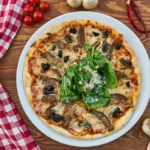







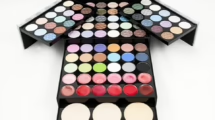
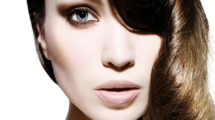


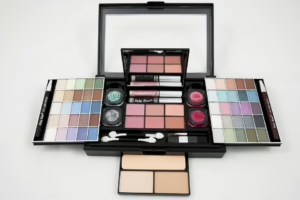
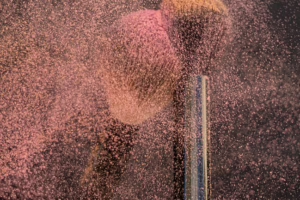
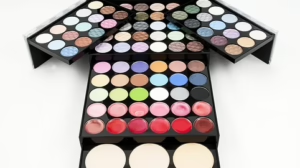
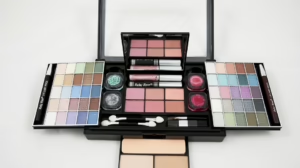





Add Comment